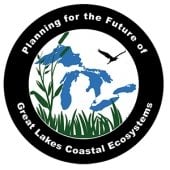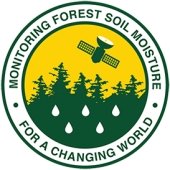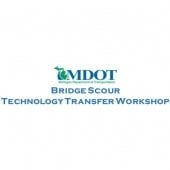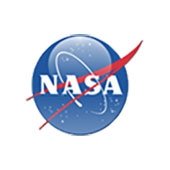MTRI’s outreach programs include a range of activities that inform the public and
encourage collaboration with groups beyond traditional academia. We host educational
and collaborative workshops and deliver lectures in person or through webinars. We make the data that we produce
openly accessible through online data platforms, and design science-based decision support
tools. These are a few examples of how we reach out to and engage with the broader
community.
Workshops
MTRI has trained facilitators, and experience in leading technical focus groups, scientific workshops, and international remote sensing conferences. If you're interested in working with us to host a workshop, please contact Michelle Wienert (mwienert@mtu.edu or 734-913-6870).

Planning for the Future of Great Lakes Coastal Ecosystems
When: Monday, November 4, 2019
MTRI is leading an interdisciplinary, NASA-funded project to better understand historical and present-day drivers of change in Great Lakes coastal wetlands. The project combines remote sensing, modeling, and field studies to investigate the effects of land use, agricultural nutrient runoff, climate change, large-watershed hydrology, and water levels on plant communities and ecosystem function in Great Lakes coastal wetlands. On November 4, 2019, MTRI and our collaborators invited land managers, planners, and researchers to discuss what research outcomes would be most useful to their efforts to improve the resiliency of Great Lakes coastal ecosystems.

Monitoring Forest Soil Moisture for a Changing World
MTRI and the USDA Forest Service hosted a facilitated workshop on Monitoring Forest Soil Moisture for a Changing World in Ann Arbor, Michigan, on May 15-17, 2018. The two-and-a- half day workshop facilitated discussion among research scientists in forestry networks with stakeholders and federal, state, and private natural resource managers on contemporary and emerging soil moisture research and management issues, data availability, and data priorities. The overarching goal was to develop a new strategic approach of research and monitoring on soil moisture issues for forest areas of the United States.

MDOT Bridge Scour Technology Transfer
The Michigan Department of Transportation (MDOT) and the Michigan Tech Research Institute (MTRI) held a Bridge Scour Technology Transfer Workshop on October 5, 2017. The workshop was an overview and shared the results of the NCHRP Domestic Scan 15-02, “Bridge Scour Risk Management,” that invited national experts and peer agencies to attend to discuss current topics and trends in scour analysis, modeling, and monitoring.

Great Lakes Workshop Series on Remote Sensing of Water Quality
The Great Lakes Workshop Series on Remote Sensing of Water Quality brought together international researchers on the remote sensing of inland waters and the end users who put remote sensing products to work monitoring and managing the Great Lakes. The 2014 series consisted of two two-day workshops that included plenary presentations, breakout groups and networking events. Participants learned about remote sensing resources and best practices from leaders in the field, connected with other attendees for potential collaborations, and contributed to the development of a working community of practice for Great Lakes remote sensing. Stakeholders gained in-depth insight into how to apply available remote sensing products to their organizations' current challenges and had the opportunity to provide direct input into future priorities for data product development. It is hoped that the series can be continued with annual update meetings in future years.
Web Portals and Websites Hosted by MTRI
MichiganView
MichiganView promotes the use of remote sensing technology in Michigan by supporting research, education, workforce development, and technology transfer. The consortium consists of academic, non-profit, and government organizations that are involved in remote sensing and are interested in the public sharing of educational resources, research activities, and dataset sharing.
North American Wildland Fuels Database Viewer
The North American Wildland Fuels Database (NAWFD) was developed to enable best practices for modeling national- and regional-scale fire emissions by incorporating uncertainty into fuels estimates. NAWFD aggregates fuel loading information from 26,620 field sites compiled from 271 data sources. Each point is assigned to an EVT Group fuelbed. Probability distributions are generated for each fuel stratum within each fuelbed. This data access application includes data query and visualization tools and a data API.
Satellite-Derived Great Lakes Submerged Aquatic Vegetation (SAV) Classification Map Interactive Mapping Website
This interactive web map displays MTRI’s submerged aquatic vegetation (SAV) maps of Lakes Huron, Ontario, Michigan, and Erie based on remote sensing satellite data for 2010-2012. These maps represent the extent of SAV in the optically shallow areas of the Great Lakes. The maps, which have a 30-meter resolution, were generated using an MTRI-developed depth-invariant algorithm and utilized Landsat satellite data from 2008-2011 collected during the vegetative growing season.
Great Lakes Dangerous Nearshore Current Dashboard
Dangerous nearshore currents are common in the Great Lakes and can be extremely dangerous to swimmers. As part of ongoing research to understand the spatial and temporal distribution of these hazards, Michigan Technological University has developed a method for classifying the hazard level of a given stretch of shoreline based on the persistence of bathymetric features that indicate the presence of strong currents. This Dashboard was developed as a resource for beach managers, emergency response agencies, local media, policymakers, and the public to better understand the hazard of Great Lakes currents.
Satellite-Derived Great Lakes Remote Sensing
You can view remote sensing-derived products starting from the year 2002 through this web application. Data available through this data visualization platform include Lake Surface Temperature (LST), MODIS Natural Color Imagery (NCI), Harmful Algal Blooms (HABs), Chlorophyll (Chl), Dissolved Organic Carbon (DOC), and Suspended Minerals (SM).
Harmful Algal Bloom Mapping, Water Quality, and Public Health
This web application houses remote sensing-derived Harmful Algal Bloom Mapping, Water Quality, and Public Health products for the Great Lakes region from 2013 through today.
RavelRAT Dry Ravel Modeling
RavelRAT is a dry ravel calculator that performs geospatial modeling given a user-selected (or uploaded) burn severity map and other input parameters that help determine the degree to which loose material travels down sloped topography. Outputs include geospatial layers showing mass gained and mass lost, both displayed within a web viewer and available for download.
Great Lakes Optical Properties Geospatial Database
The Great Lakes Optical Properties Geospatial Database (GLOPGD) is a representation of in situ optical and water quality measurements made in all five of the Great Lakes over the last 15 years. This geospatial database has been collected by various leading groups and institutions such as the NOAA Great Lakes Environmental Research Lab, the Upstate Freshwater Institute, and others in the Great Lakes to help better understand long term changes due to anthropogenic forcing, climate change, and invasive species.
WFEIS
The Wildland Fire Emissions Information System (WFEIS) is a web-based tool that provides users a simple interface for computing wildland fire emissions across CONUS and Alaska at landscape to regional scales (1-km spatial resolution). WFEIS integrates burned area maps along with corresponding fuel loading data layers and fuel consumption models to compute wildland and cropland fire fuel consumption and emissions for user-specified locations and date ranges. The system currently allows for calculation of emissions from fires within the United States (excluding Hawaii and territories) from 1984 through 2013 depending on the selected burned area product.
Great Lakes Coastal Wetlands Mapping
A web viewer for the first comprehensive wetland delineation map of the bi-national coastal Great Lakes that includes distinction of monocultures for three dominant plant species: Schoenoplectus, Typha spp., and Phragmites australis, as well as non-wetland land cover and land use.
Rapid Response Erosion Database: Spatial WEPP Model Inputs Generator
The Rapid Response Erosion Database (RRED) web app provides spatial digital elevation model, land cover and soils data pre-registered and linked with WEPP parameter files.
Carbon Data Explorer
The Carbon Data Explorer is a web-based visualization tool for multi-dimensional geospatial gridded datasets.
Burn Severity Predictor
This app predicts burn severity by comparing properties of the drawn bounding box to nearby historic fires having known burn severity data (classified dNBR maps). Users can draw a bounding box and select the historic fires to be used in the prediction.
Stampsands Data Viewer
In Gay, Michigan, a large metal-rich ‘halo’ exists in sediments around the Keweenaw Peninsula, a consequence of past copper mining. Waste rock from coastal tailings has migrated along extensive stretches of the shoreline, threatening critical fish breeding grounds and coastal benthic invertebrate communities, damming stream outlets, and intercepting wetlands and recreational beaches. Using a combination of LiDAR and imagery, a team from Michigan Tech University is working with the US Army Corps of Engineers, the US EPA, the Michigan DEQ, and others on updating analyses on stamp sand encroachment prior to dredging activities in the “trough” region, in conjunction with ground-truth Ponar and ROV studies that will help determine percent stamp sand and toxicity in covered regions. Use this site to explore geospatial data products developed under this project.
Upper Great Lakes Observing System
The Upper Great Lakes Observing System (UGLOS) is a unique public-private partnership between Michigan Universities, private sector entities, and First Nations to provide coastal observations throughout the harsh and expansive Upper Great Lakes. This site offers access to real-time observations from buoys and monitoring stations in the Great Lakes regions.
Characterization of Unpaved Road Conditions Through the Use of Remote Sensing
This site includes information about an unpaved roads assessment conducted as a cooperative agreement between Michigan Technological University (MTU) and the US Department of Transportation Research and Innovative Technology Administration (USDOT-RITA). Downloadable deliverables from the project are available.
